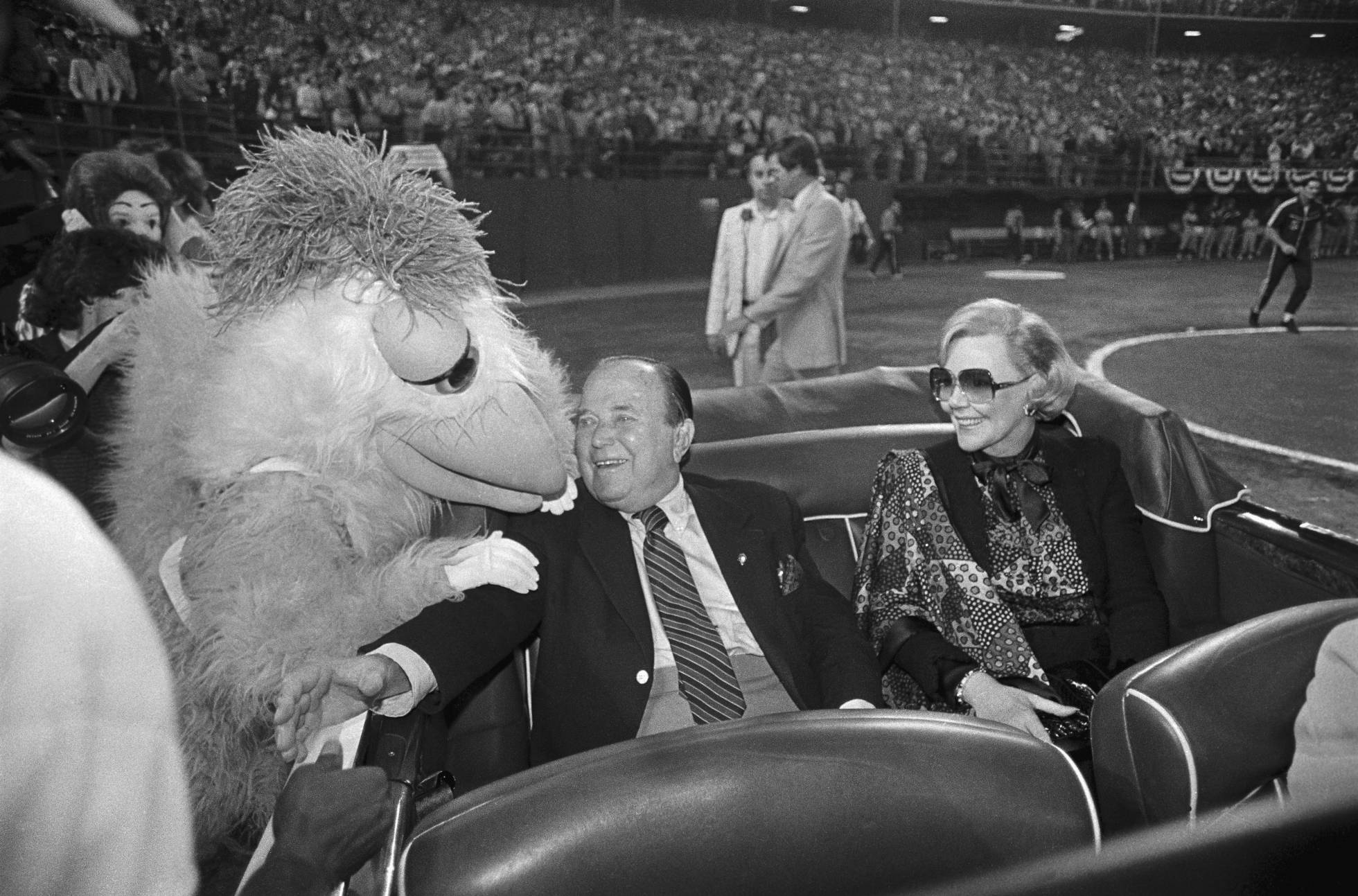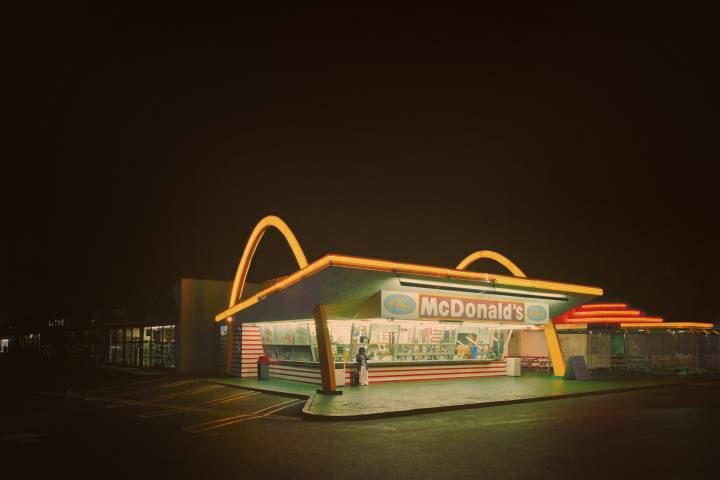Everything
Two brothers, a fast food stand and a dream. Richard and Maurice McDonald revolutionised the minuscule population of Arcadia (California) when they opened a stand selling, for 10 cents, hamburgers served in a minute, wrapped in paper and without the need for waiters: the client asked for a menu directly from the chef. Three years later, in 1940, the McDonald brothers turned their agile food caravan into a restaurant with foundations, flanked by a yellow M that was 7.5 metres high and could be seen not from space, but from anywhere in the town.
Today, there are almost 40,000 McDonald’s restaurants, which together feed 68 million people every day in 118 countries. In 1999, Time magazine honored the 100 most important people of the century: Albert Einstein, Mahatma Ghandi, Bart Simpson and, of course, the founder of McDonald’s, Ray Kroc. Wait a minute, who is Ray Kroc? What about the McDonald brothers? Let’s go with this story of betrayals.
The McDonald brothers (Richard and Maurice) went from having the best idea in the history of hospitality to the worst idea in the history of business.
Ray Kroc is a self-made man, but one who was made with pieces of others. The American dream wrapped to carry and served in record time. Ray Kroc (Chicago, 1902 – San Diego, 1984) was selling milkshake machines (without much success) when the McDonald brothers placed an order for six mixers. Kroc felt that the lottery had touched him, but he had no idea to what extent. He immediately saw the potential of the dizzying food system at the McDonald’s restaurant: the cost was minuscule, and the customers infinite.
That’s why Kroc offered to work as a brand representative. In 1955, he began selling licences. In 1961, he longed for expansion at the national level. The McDonald brothers lacked that ambition (their dream was to reach a million dollars before turning 50), so they sold the company for four million dollars and 0.5 percent of the profits. Kroc racked up the last dollar, and later defined them in a book as “obtuse” and openly indifferent to the fact that he was investing every penny he had in the project.
When the McDonald brothers sold out to Kroc, they kept the original store for their employees to run – a “rotten trick”, according to Kroc, that Richard and Maurice nevertheless justified by having spent 30 years working seven days a week. Kroc was no doubt already plotting his revenge. Now, 56 years later, McDonald’s is worth 140 billion dollars.

The agreement between Kroc and the McDonald’s closed with a handshake. No contracts. The excuse was that none of the three were interested in declaring the 0.5% in their accounts. In this way, Richard and Maurice McDonald went from having the best idea in the history of hospitality to the worst idea in the history of business. They never received that percentage.
Kroc expanded the chain of restaurants across the country and redefined the concept of fast food, making consumption even faster. How? So that diners did not stay too long at the restaurants, he turned off the heating. He installed seats with a straight back, so that diners leaned over the table and thus ate faster. He installed larger tables so that customers could not talk at ease. The drinks were served in paper cones that were impossible to support: if customers had to hold their drinks, they would eat faster. Customers accepted this restaurant format for its sheer consistency. The experience was as cheap as the food.
After turning McDonalds into a mecca of American popular culture, Kroc persisted in buying the original restaurant. The McDonald brothers strongly refused, because their intention was to leave it to the employees who had inaugurated it in 1940. Ironically, this original establishment had to be renamed “The Big M”, because the name “McDonald’s” was the registered property of Kroc. Kroc’s reaction was to open a McDonald’s across the street from The Big M. A few years later, The Big M closed its doors, unable to compete with the McDonald’s opposite.
Kroc made sure that he would go down in history as the founder of McDonalds. In his autobiography, he dated the company’s origin to 1955, with the opening of the first restaurant supervised by him in Des Plaines, Illinois. The nephew of the McDonald brothers, Ronald (yes, he calls himself the clown icon of the brand), condemns Kroc’s unbridled ego: “Why else would he put a bust of his face in every restaurant? Why put his name on the tablecloths? There is no other corporation in the United States in which an employee becomes the founder.” Richard McDonald had complained that Kroc was waiting to buy his company in order to start forging his legacy as the official founder. “No one referred to him as the founder until we sold him the company.”
In 1990, the company bought the mobile hamburger stand with which everything had started. It restored it, painted it with the corporate colors of red and yellow, and installed it in a museum dedicated to the history of McDonald’s. That’s how quickly the myths are rewritten – almost as fast as a Big Mac is prepared. And the story is always written by the winners. Maurice McDonald died of a heart attack in 1971, overcome by the stress and rage of having been duped and swindled, and then struck down by history. Richard took things more calmly, living to be 89 years old.

“I have enough money, it’s not worth dying for that,” he told his nephew Ronald. He has seen how his brother Maurice had suffered to the point of death, and did not want the same thing to happen to him. Richard McDonald, admittedly, burned each time he received an annual copy of McDonald’s magazine in his home commemorating “Founder’s Day” – a tribute to Ray Kroc, in which the McDonald brothers were not mentioned. However, Richard insisted that he did not regret his decision to sell the company and live a quiet life. “I would have wound up in some skyscraper somewhere with about four ulcers and eight tax attorneys trying to figure out how to pay all my income tax,” he reflected in 1991.
When he died in 1998, Richard McDonald lived in a three-room house in his native New Hampshire. He left an inheritance of 2.7 million dollars. Kroc, on the other hand, died in 1984 with a fortune estimated at 760 million dollars and having bought his own baseball team. Today, the McDonald’s website proudly remembers the history of its carbohydrate world domination. The first stop of that walk through the history of McDonald’s is in 1955, with the arrival of Ray Kroc.

he Founder (directed by John Lee Hancock) is a comedy in which Michael Keaton plays Ray Kroc and the McDonald brothers appear as funny side characters. One of the promotional phrases of the film is “He took someone else’s idea and America ate it up”.
Devoured by the ambition of their partner, Richard and Maurice McDonald passed into posterity as two guys with a big idea, but a dream that was too small. In 1989, a promotional campaign summed up the company’s historical legacy: “It began as a spark from Dick [Richard] and Mac [Maurice] McDonald. And with the guiding hand of Ray Kroc, it became a flame. Today, the Golden Arches shine across this land.”
And, indeed, that giant M shines so bright that it has ended up leaving its creators in the shade. Because, in the business that invented the concept of fast food, the important thing is not who makes you the hamburger, but the speed with which they serve you. And Ray Kroc was the fastest guy in this story.